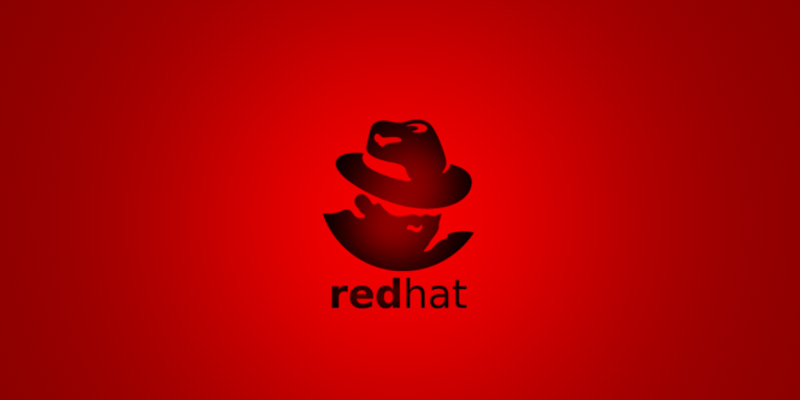- (5.0 Star)
Cloud Pro Virtualization
Diploma Training
We provide Online Instructor And Classroom Instructor led Live virtual classroom by certified trainers/ industry professionals
- Get Up to 35% discount
About Course
Cloud computing and virtualization certifications are the latest technologies helping businesses to grow exponentially across all verticals. This development has to lead to an increase in demand for skilled professionals to take control of the situation. Knowledge in virtualization helps one to understand the physical infrastructure environment to power cloud computing ; while cloud computing skills enables professionals to manage data in private clouds and keep a watch on the security issues. A professional skilled in virtualization and cloud computing gets the best of both worlds and is most sought-after by Fortune 500 companies. Simplilearn provides a range of accredited and high quality trainings in the Virtualization and cloud computing domain for professionals to reskill and move ahead in their careers. Our virtualization and cloud computing training packages include CompTIA courses such as CompTIA A+, CompTIA Project+, CompTIA Security+, CompTIA CDIA+, CompTIA Network+ , CompTIA Server+, CompTIA Strata IT fundamentals ,the All –in-one CompTIA training bundle and several other courses relevant to the domain.
Key Features
You will get 100% job Assurance and life time e-placement support
classed taken by globally certified trainers
You will get 3 year Dedicated placement support
Courses are globally recognized & accredited

Course Type:
Diploma Training
Live virtual classroom:
25,999/- Per Module
32,499/-
Regular classroom:
25,999/- Per Module
32,499/-
- Duration:
24 Months
- Enrolled:
120 Learners
- Eligibility:
10 / 10+2 / Graduate
- 5 Star:
15 Reviews
SEMESTER I
The Microsoft Certified Solutions Associate (MCSA): Windows Server 2012 is a mid-level certification that covers skills required to manage Windows Server 2012 operating system, client-server structure, network infrastructure, virtualization, etc. Microsoft Certified Solution Associate (MCSA) on Windows Server 2012 training give more real time lab experience on Active Directory Domain Service, DNS, DHCP, File & Storage Service, Remote Access – VPN and Direct Access, NAP, Advance Administration and many more. To get MCSA certification student should be pass 70-410 Installing and Configuring Windows Server 2012, 70-411 Administering Windows Server 2012 and 70-412 Configuring Advanced Windows Server 2012 Services exam. After Successfully completion of MCSA – Windows Server 2012 training and certification you can act as Network Administrator, System Administrator, computer network specialist, and it is the first step on your path to becoming a Microsoft Certified Solution Expert.

Duration : 60 Hrs.
Eligibility : 10th/10+2 /Graduate with Basic Network Skill
410 :INSTALLING AND CONFIGURING WINDOWS SERVER 2012
- Deploying and Managing Windows Server 2012
- Introduction to Active Directory Domain Services
- Managing Active Directory Domain Services Objects
- Automating Active Directory Domain Services Administration
- Implementing IPv4
- Implementing Dynamic Host Configuration Protocol
- Implementing Domain Name System
- Implementing IPv6
- Implementing Local Storage
- Implementing File and Print Services
- Implementing Group Policy
- Securing Windows Servers Using Group Policy Objects
- Implementing Server Virtualization with Hyper-V
411 : ADMINISTERING WINDOWS SERVER 2012
- Deploying and Maintaining Server Images
- Configuring and Troubleshooting Domain Name System
- Maintaining Active Directory Domain Services
- Managing User and Service Accounts
- Implementing a Group Policy Infrastructure
- Managing User Desktops with Group Policy
- Configuring and Troubleshooting Remote Access
- Installing, Configuring, and Troubleshooting the Network Policy Server Role
- Implementing Network Access Protection
- Optimizing File Services
- Configuring Encryption and Advanced Auditing
- Implementing Update Management
- Monitoring Windows Server 2012
412 : CONFIGURING ADVANCED WINDOWS SERVER 2012 SERVICES
- Implementing Advanced Network Services
- Implementing Advanced File Services
- Implementing Dynamic Access Control
- Implementing Distributed Active
- Directory Domain Services Deployments
- Implementing Active Directory Domain
- Services Sites and Replication
- Implementing Active Directory Certificate Services
- Implementing Active Directory Rights Management Services
- Implementing Active Directory Federation Services
- Implementing Network Load Balancing
- Implementing Failover Clustering
- Implementing Failover Clustering with Hyper-V
- Implementing Disaster Recovery
- Introduction to Cloud Computing
- History and Evolution of Cloud
- Computing Private, Public & Hybrid clouds
- Cloud computing architecture and industry frameworks Cloud computing infrastructure
- Practical applications of cloud computing Vendors and products for Cloud computing
- Audit and security risk with Cloud computing Risk Mitigation methodology for Cloud computing
- Infrastructure as a service (Iaas) Platform as a service (Paas)
- Software as a service (Saas)
Prove your expertise in managing and implementing Microsoft private cloud computing technologies. With Windows Server and System Center, you will build your Microsoft private cloud solution to optimise IT service delivery and gain the automation and flexibility you need for your IT infrastructure, now and in the future. This Certification training give you depth skill on Virtulisation and Cloud Computing on highly efficient modern data centre. MCSA is is prerequisite for MCSE Private Cloud. To Earning an MCSE: Private Cloud certification will qualify you for jobs such as server administrator, systems programmer and network manager.

Duration : 60 Hrs.
Eligibility : 10th/10+2 / Graduate with Basic Networking Skill
70-246 MONITORING AND OPERATING A PRIVATE CLOUD WITH SYSTEM CENTER 2012
- Introduction to the Private Cloud
- Configuring and Optimizing Business Unit Clouds
- Deploying Cloud Services
- Monitoring Private Cloud Services
- Configuring Application Performance Monitoring
- Operating and Extending Service Management in thePrivate Cloud
- Automatic Incident Creation, Remediation, and Change Requests
- Problem Management in the Private Cloud
- Automating Self-Service Provisioning
- Private Cloud Protection and Recovery
- Configuring Compliance in the Private Cloud
- Configuring SLAs, Dashboards, and Widgets
- 70-247 CONFIGURING AND DEPLOYING A PRIVATE CLOUD WITHSYSTEM CENTER 2012
- Planning for the Private Cloud
- Configuring and Deploying the Private Cloud with SystemCenter 2012
- Virtual Machine Manager
- Extending and Maintaining the Private Cloud Infrastructure
- Implementing Service Management for the Private Cloud
- Protecting the Private Cloud Infrastructure
- Automating and Standardizing the Private Cloud
- Configuring the Cloud Services Process Pack
Sent Us a Message
SEMESTER II
A Red Hat Certified Engineer (RHCE) is a Red Hat Certified System Administrator (RHCSA) who possesses the additional skills, knowledge, and abilities required of a senior system administrator responsible for Red Hat Enterprise Linux systems. The cornerstone Red Hat certification, it is designed to test and validate the skills and knowledge necessary to work as a senior-level Linux system administrator. Topics covered include advanced IP routing and services, managing runtime kernel behavior, working with iSCSI, automating maintenance tasks with shell scripts, and working with networking services for Web, FTP, NFS, SMB, SMTP, SSH and more. An RHSCA is a prerequisite for the RHCE.
Duration : 60 Hrs.
Eligibility : 10th/10+2 / Graduate with Network Skill
ACCESSING THE COMMAND LINE
- Log in to a Linux system and run simple commands using the shell.
MANAGING FILES FROM THE COMMAND LINE
- Work with files from the bash shell prompt.
MANAGING LOCAL LINUX USERS AND GROUPS
- Manage Linux users and groups and administer local password policies.
CONTROLLING ACCESS TO FILES WITH LINUX FILE SYSTEM PERMISSIONS
- Set access permissions on files and interpret the security effects of different permission settings.
MANAGING SELINUX SECURITY
Use SELinux to manage access to files and interpret and troubleshoot SELinux security effects.
MONITORING AND MANAGING LINUX PROCESSES
- Monitor and control processes running on the system.
INSTALLING AND UPDATING SOFTWARE PACKAGES
- Download, install, update, and manage software packages from Red Hat and yum package repositories.
CONTROLLING SERVICES AND DAEMONS
- Control and monitor network services and system daemons using systemd.
MANAGING RED HAT ENTERPRISE LINUX NETWORKING
- Configure basic IPv4 networking on Red Hat Enterprise Linux systems.
ANALYZING AND STORING LOGS
- Locate and interpret relevant system log files for troubleshooting purposes.
MANAGING STORAGE AND FILE SYSTEMS
- Create and use disk partitions, logical volumes, file systems, and swap spaces.
SCHEDULING SYSTEM TASKS
- Schedule recurring system tasks using cron and systemd timer units.
MOUNTING NETWORK FILE SYSTEMS
- Mount network file system (NFS) exports and server message block (SMB) shares from network file servers.
LIMITING NETWORK COMMUNICATION WITH FIREWALL
- Configure a basic local firewall.
VIRTUALIZATION AND KICKSTART
- Manage KVMs and install them with Red Hat Enterprise Linux using Kickstart.
MANAGING IPV6 NETWORKING
- Configure and troubleshoot basic IPv6 networking on Red Hat Enterprise Linux systems.
CONFIGURING LINK AGGREGATION AND BRIDGING
- Configure and troubleshoot advanced network interface functionality including bonding, teaming, and local software bridges.
CONTROLLING NETWORK PORT SECURITY
- Permit and reject access to network services using advanced SELinux and firewalld filtering techniques.
MANAGING DNS FOR SERVERS
- Set and verify correct DNS records for systems and configure secure-caching DNS.
CONFIGURING E-MAIL DELIVERY
- Relay all e-mail sent by the system to a SMTP gateway for central delivery.
PROVIDING BLOCK-BASED STORAGE
- Provide and use networked iSCSI block devices as remote disks.
PROVIDING FILE-BASED STORAGE
- Provide NFS exports and SMB file shares to specific systems and users.
CONFIGURING MARIADB DATABASES
- Provide a MariaDB SQL database for use by programs and database administrators.
PROVIDING APACHE HTTPD WEB SERVICE
- Configure Apache HTTPD to provide Transport Layer Security (TLS)-enabled websites and virtual hosts.
WRITING BASH SCRIPTS
- Write simple shell scripts using Bash.
BASH CONDITIONALS AND CONTROL STRUCTURES
- Use Bash conditionals and other control structures to write more sophisticated shell commands and scripts.
CONFIGURING THE SHELL ENVIRONMENT
- Customize Bash startup and use environment variables, Bash aliases, and Bash functions.
- Module 1: Red Hat Enterprise Virtualization overview
- Module 2: Red Hat Enterprise Virtualization Manager
- Module 3: Red Hat Enterprise Virtualization Hypervisor
- Module 4: Red Hat Enterprise Virtualization environment configuration
- Module 5: Red Hat Enterprise Virtualization for Servers
- Module 6: Red Hat Enterprise Virtualization for Desktops
- Module 7: Virtual machine templates
- Module 8: Pools and users
- Module 9: Monitoring and reports
- Module 10: Advanced Red Hat Enterprise Virtualization
- Module 11: Red Hat Enterprise Linux hosts
- Module 12:Migration and high availability
- Module 13:Comprehensive review
- Module 1: Understand Red Hat OpenStack features and terminology.
- Module 2: Practice installing:Red Hat OpenStack using packstack on a single machine.
- Module 3: Learn about the future direction of Red Hat OpenStack.
- Module 4: Review the installation and management of Red Hat OpenStack.
Duration : 40 Hrs.
Eligibility : 10th/10+2 / Graduate with Server Administration Skill
- Course Introduction
- Introductions and course logistics
- Course objectives
VIRTUALIZED DATA CENTER
- Introduce components of the virtualized data center
- Describe where vSphere fits into the cloud architecture
- Install and use vSphere Client
CREATING VIRTUAL MACHINES
- Introduce virtual machines, virtual machine hardware, and virtual machine files
- Deploy a single virtual machine
VMWARE VCENTER SERVER
- Introduce the vCenter Server architecture
- Introduce VMware® vCenter™ Single Sign-On™
- Install and use vSphere Web Client
- Introduce VMware® vCenter™ Server Appliance™
- Configure and manage vCenter Server Appliance
- Manage vCenter Server inventory objects and licenses
CONFIGURING AND MANAGING VIRTUAL NETWORKS
- Describe, create, and manage a standard switch
- Describe and modify standard switch properties
- Configure virtual switch load-balancing algorithms
CONFIGURING AND MANAGING VIRTUAL STORAGE
- Introduce storage protocols and device names
- Configure ESXi with iSCSI, NFS, and
- Fibre Channel storage
- Create and manage vSpheredatastores
- Deploy and manage VMware® Virtual SAN™
VIRTUAL MACHINE MANAGEMENT
- Use templates and cloning to deploy virtual machines
- Modify and manage virtual machines
- Create and manage virtual machine snapshots
- Perform vSpherevMotion and vSphere
- Storage vMotion migrations
- Create a VMware vSphere® vApp™
ACCESS AND AUTHENTICATION CONTROL
- Control user access through roles and permissions
- Configure and manage the ESXi firewall
- Configure ESXi lockdown mode
- Integrate ESXi with Active Directory
HIGH AVAILABILITY AND FAULT TOLERANCE
- Introduce the new vSphere High Availability architecture
- Configure and manage a vSphere HA cluster
- Introduce vSphere Fault Tolerance
Describe VMware vSphere® Replication
RESOURCE MANAGEMENT AND MONITORING
- Introduce virtual CPU and memory concepts
- Describe methods for optimizing CPU and memory usage
- Configure and manage resource pools
- Monitor resource usage using vCenter Server performance graphs and alarms
PATCH MANAGEMENT
- Use vSphere Update Manager to manage ESXi patching
- Install vSphere Update Manager and the vSphere Update Manager plug-in
- Create patch baselines
- Scan and remediate hosts
SCALABILITY
- Configure and manage a VMware vSphere® Distributed Resource Scheduler™ (DRS) cluster
- Configure Enhanced vMotion Compatibility
- Use vSphere HA and DRS together
INSTALLING VMWARE COMPONENTS
- Introduce ESXi installation
- Describe boot-from-SAN requirements
- Introduce vCenter Server deployment options
- Describe vCenter Server hardware, software, and database requirements
- Install vCenter Server (Windows-based)
EXAM & CERTIFICATION
Anyone Playing A Role Or Interested In The Use And Management Of Internet-Based IT Services, Including Staff At Internal And External Service Providers, Their Customers, And Their Managers Can Opt For The Cloud Computing Certification.

